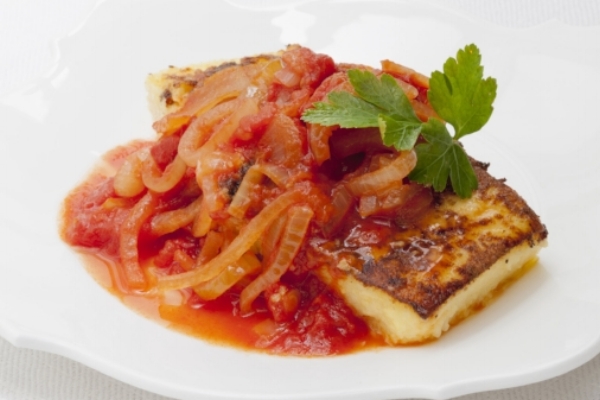Sitting on the terrace of the bustling Roman trattoria Dal Bolognese one sunny Sunday in May, I relished a version of this classic dish, pungent with freshly ground black pepper and enriched with a mixture of sheep’s milk Pecorino cheese and Parmigiano-Reggiano. We were dining with our friends George Germon and Johanne Killeen, and George noted that this is one of the hardest pastas to get right, probably because it is so basic and appears easy. The pepper flavor should be dominant, but should not overwhelm the palate. We eat pasta at least once a week, and this is one of my “Go To” preparations, since it goes together in a matter of minutes and is such a thoroughly satisfying dish.
4 servings
EQUIPMENT
A 10-quart (10 l) pasta pot fitted with a colander; 4 warmed, shallow soup bowls.
INGREDIENTS
3 tablespoons coarse, freshly ground black pepper, preferably Tellicherry
2 tablespoons extra-virgin olive oil
2 tablespoons (30 g) salted butter
3 tablespoons coarse sea salt
1 pound (500 g) Italian spaghetti
3/4 cup (50 g) freshly grated Pecorino-Romano cheese, plus extra for serving
3/4 cup (75 g) freshly grated Parmigiano-Reggiano cheese, plus extra for serving
METHOD
1. Place the pepper in a large skillet over a medium heat and toast it, shaking the pan, until fragrant, about 30 seconds. Add the oil and the butter and stir until the butter is melted. Remove from the heat.
2. In the pasta pot, bring 8 quarts (8 l) of water to a rolling boil over high heat. Add the salt and the pasta, stirring to prevent the pasta from sticking. Cook until tender but firm to the bite. Remove the pasta pot from the heat. Remove the colander and drain the pasta over the sink, shaking to remove the excess water. Reserve some of the cooking water for the sauce.
3. Return the skillet to the heat. Add about 4 tablespoons of the pasta water to the oil mixture and stir to blend. Add the pasta and toss until it is evenly coated. Add the cheeses and toss until the pasta is evenly coated. If the pasta is dry, add more pasta water. Serve immediately, with additional grated Pecorino and Parmigiano on the side.
THE SECRET
Buy the best peppercorns you can find. I favor the highly aromatic Tellicherry pepper from Malabar, off the coast of India, and love its spiciness, hint of wood, and lingering scent. The berries are left on the vines a bit longer, so they develop a deep, rich flavor. The peppercorns from The Spice House (thespicehouse.com) are fabulous and reliable. And do invest in a good pepper mill, one that will coarsely grind the peppercorns. I use a battery-powered Peugeot mill. Peugot mills are readily available in gourmet shops. (Note I have no affiliation with these brands, they are just the ones I like and chose to use in my kitchen).
This recipe was first published in The French Kitchen Cookbook: Recipes and Lessons from Paris and Provence. All rights reserved. Please do not reproduce without permission.






